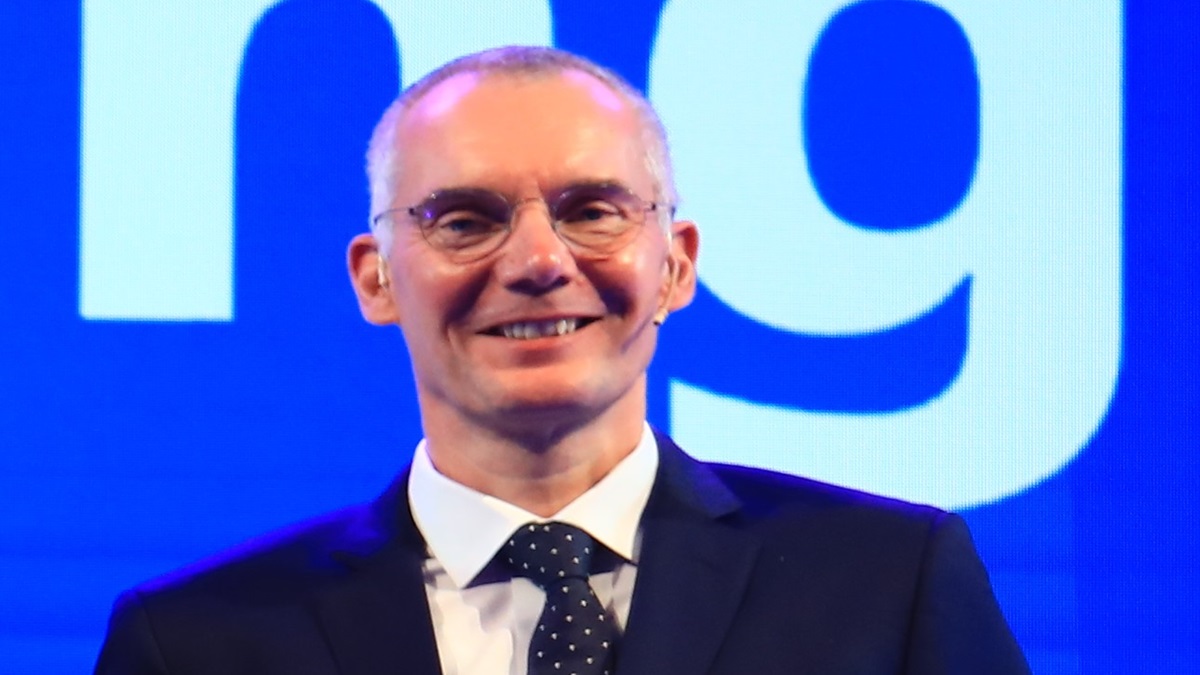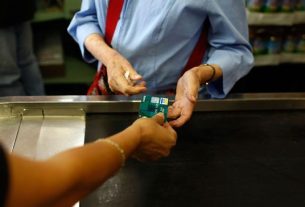|
Getting your Trinity Audio player ready...
|
Novo Nordisk on Thursday completed 100 years since its inception in 1923. Novo Nordisk along with other key players like Eli Lilly and Sanofi are dominant in the global insulin market. The Danish Pharmaceutical company manufactures and markets pharmaceutical products and services, specifically diabetes care medications and devices.
The company is also involved with hemostasis management, growth hormone therapy and hormone replacement therapy.
The official foundation date of Novo Nordisk is 16 February 1923. This combines two defining moments in the company’s history: (i) the establishment of Nordisk Insulin laboratorium in 1923, and (ii) the day Novo Terapeutisk Laboratorium introduced its first insulin on 16 February 1925. Novo Nordisk insulins have been available in India since 1935, spanning more than 80 years.
During the global anniversary event today, Financial Express.com got the opportunity to speak to John Dawber, Corporate Vice President and Managing Director, Novo Nordisk Global Business Solutions. He talked about the scope and potential of GLP-1, plans for India business, goals for other therapeutic areas among others. Excerpt:
Novo Nordisk is a leading player in diabetic care and management. What are your upcoming plans for India which also known as the ‘Diabetes Capital of the World?’
First of all, if you look at India’s diabetes market there is still a lot of untapped opportunity, there are still lot of people who need better treatments. Of the 80 million people that live with diabetes in this country, we treat approximately a million. So, there is a lot way to go. If you look forward to 2-3 years, then not only are we investing in insulin, we are also investing in another area of diabetes treatment which is called GLP1. Now, GLP1 treatments have been around for may be one and a half decades but they are injectible. However, in India last year we launched world’s first ever GLP1 in tablet form and that has a very good uptake in India. So, I think over the next 2-3 years oral semaglutide will have a very big role to play in helping people in India in managing diabetes. Beyond that we then look into the treatment of obesity and there is a very strong link between obesity and diabetes. The better you can treat obesity, perhaps you can also reduce the burden of diabetes in the future. So, in the next couple of years we will be bringing one of the newer obesity treatments into the market in India. If you look further into the future, this GLP1 classic medicines has shown a lot of promise in other therapy areas like cardiovascular disease, non-alcoholic liver disease (NASH), and even Alzheimer’s disease. In 5-10 years you could expect treatment in those areas as well. So, it starts with diabetes and moves to obesity and then expands further into other therapy areas.
Do you think it is beneficial if one drug can be used for multiple disorders?
Yes. If its effective and if its cost-effective. Sometimes, when you research a medicine for a particular disease and you start using it for that disease you then find that there are additional benefits and that’s where you start thinking if there is an unmet need in another therapy area. And if there is then it is worth starting a research programme in that area and investigate whether we have efficacy, safety and its cost-effectiveness.
100 years ago, in 1923 Nordisk Insulin Labotarium commercialised the production of insulin. From first version of insulin to oral semaglutide, Novo Nordisk have come a long way. What are some of the hits and misses during this period? What is the plan of action that the pharmaceutical sector should have in the coming years?
I think for Novo Nordisk, we have been very fortunate with our research programmes in diabetes particularly with insulin. There has been more hits than misses. One of the benefits that we had is real focus because if you think about this company that started a 100 years ago and is working in diabetes and still is now, we have learnt a lot about patients of diabetes…we have learnt a lot about how insulin works, we have learnt a lot about the safety and efficacy and how all of these medicines work which means that if you continue to innovate in the same area your hit ratio will improve. The temptation of the last 30-40 years has been to diversifying into other things. We had one insulin pump programme at one point…there has been a number of hits and misses over the year. From the perspective of a pharmaceutical company or industry perspective…I think one of the things that helped us is building stronger relationships not just in India but around the world.
Speaking of diversification, diabetes treatments accounts for over 80 percent of your business. Are there any plans for diversification into new therapeutic areas?
Yes. As I mentioned, you learn more about your own molecules and realise there is opportunities in new areas, then you consider to diversify. So, cardiovascular disease, NASH, Alzheimer’s and number of other rare diseases…we think we will be diversifying. Having said that just the fact that we treat more than 40 million diabetes patients around the world with our insulins…it will remain vital to us.
What more new products from the global pipeline can we expect in the India market in the upcoming financial year?
In the upcoming financial year, I think its unlikely that we will bring something to the India market as we just brought oral semaglutide last year. But the last 3 years have been a very rich pipeline launches for India in rare diseases also. In 2024, I think we can be thinking to launch obesity treatment. In 2025-26 potentially longer acting insulin and little bit further along we will something in other therapeutic areas. In two year horizon, you can expect highly effective and good treatment for obesity to be launched in India. Its available elsewhere in the world. Right now, demand is more than supply in some countries. So, its also important to us that you don’t bring a medicine to the country and then you cant supply it. So, we have to be very careful.
Earlier this month, Novo Nordisk presented “strong” sales expectations for 2023 and announced heavy investments into its production capacity. What will be your key focal areas in FY24 with respect to global business?
With respect to global business it will be GLP-1 for sure…both injectable and oral, it will be obesity treatments which is also GLP-1 and then the we will focus on continuing to grow in our insulin business. So, for the next year and half it will be GLP-1 for diabetes and obesity and that’s where huge manufacturing capacity is being invested.
There is still a persistent inequity with respect to accessibility to insulin especially in LMIC. According to you, what needs to be done?
There are number of factors to consider. People often focus on price. The price of human insulin is one of the lowest in the world and very accessible also. However, there are number of other things that are important. It’s not just about getting the insulin. It’s also about being able to get the right doctor and be able to have access to that doctor. So, investments in training doctors is very important. Similarly, the other small innovations that we have done with our older insulins…is starting the regulartory process in Europe…is trying to figure out whether refrigeration of the older insulins is necessary. As in countries like India and other countries in South East Asia not everybody has access to refrigeration. But if we show that our older insulins are stable outside the fridge that’s going to improve accessibility enormously.
The World Health Organization (WHO) has already recognised the importance of analogue insulins, and not just human insulins, by adding several analogues to the WHO Model List of Essential Medicines (EML) in 2021. What is the status of India with respect to both varieties of insulin? As there are still some countries where insulin isn’t registered yet, will this be a priority for Novo Nordisk to make these insulins accessible in such places?
If you look at some of the…mostly the World Diabetes Foundation initiatives of capacity building and infrastructure in the poorest countries of the world…it’s enormous investments. On top of that, you got the changing diabetes in children programme, which I think 30,000th child was enrolled in last year and continuous to grow also here India where kids get insulin free of charge. In India, on our commercial part, we have three generations of insulins…so we have the older human insulin then we have something that we call modern insulin which we launched in late 90s and then we have the third generation insulin which we launched in the late 2000s. All these insulins are equally effective but the quality of life, the ease of taking, and it is improving with each generation. So, we have got the most cost effective version which treats many patients, then there is a better version for those who can afford a bit more. We are probably one of the only companies that continues to push the bar.



